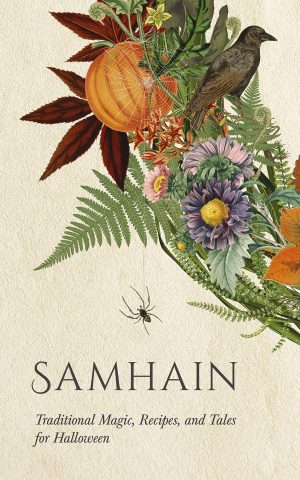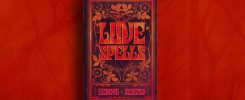Samhain is more than just a transition between the light and dark halves of the year. Observed for centuries as the final turning of the Wheel of the Year, Samhain is a Celtic festival known as the Witches’ New Year. Taking place on the 31st of October, it coincides, and is deeply interconnected, with the festivities of Halloween, November Eve, Nutcrack Night, and the Feast of the Dead. It’s a time when the veil between the physical and spiritual worlds is at its thinnest, making it a poignant moment to honour the cycle of life and death.
In the Northern Hemisphere, this sombre time of grief, love, and hope is magnified by a crisp chill in the air and the bleeding of our trees, leaves of amber, red, and orange flood the ground as the nights lengthen.
As we prepare to celebrate this ancient Sabbat, pausing in this moment between Autumn and Winter, we’re reflecting on the history of the day. From the age-old customs and rituals of Samhain to its spiritual significance, we’re exploring the many ways we can keep old traditions alive in the modern world.
Traditional Magic, Recipes, and Tales for Halloween
Honour the Witches’ New Year with this magical guide to Samhain. In a collection of age-old traditions, powerful spells, and seasonal crafts and recipes, celebrate the mystical traditions of the Halloween Sabbat.
Samhain Correspondences
Zodiac Ruling — Scorpio
Colours — Orange, Brown, Black, Purple, Red
Herbs — Garlic, Sage, Rosemary, Mugwort, Cinnamon, Witch Hazel, Hawthorn, Dandelion, Chrysanthemum, Nettle
Crystals — Onyx, Moonstone, Bloodstone, Obsidian, Smoky Quartz, Garnet, Amethyst, Jet
Incense — Wormwood, Frankincense, Myrrh, Sage, Sandalwood, Bay Leaf, Rosemary
Animals — Cats, Ravens, Wolves, Owls, Spiders, Moths, Crows, Bats
Food — Apples, Pumpkins, Turnips, Nuts, Carrots, Berries, Grains, Squash
Spellwork — Honouring Ancestors, Spirit Communication, Renewal and Rebirth
A Brief History of Samhain
Samhain is the third and final harvest of the year, known as the ‘Blood Harvest’ because cattle and livestock are brought down from their pastures and slaughtered so their meat can be preserved for the Winter. It’s a time for gathering resources and preparing for the cold months ahead. This last bountiful harvest gives way to the Season of the Crone as the dark half of the year takes hold.
Traditionally, on this night, bonfires were lit to protect communities from wandering spirits, and livestock were sacrificed to ensure blessings for the new year.
In Celtic mythology, Samhain is also seen as a time of power and magic. Figures like the Morrigan and Cailleach are linked to this Sabbat, embodying the transformative, dark energy of the season. It’s also an especially powerful time to honour the deities Hecate, Pomona, Persephone, and Odin.
Samhain in Modern Practice
Today, many of us observe Samhain by blending ancient traditions with modern customs. Whether as part of a coven or in solitary practice, Samhain remains a time to honour our ancestors and deepen our connection to the world around us.
Here’s a few ways the Wyrd coven will be marking this year’s Samhain. Hopefully this will give you ideas for methods of incorporating both traditional and contemporary rituals into your Samhain celebrations.
Ancestral Altars
Just as the Autumnal changes outside our homes are central to the celebrations of Samhain, so are the decorations we put up inside our houses, bringing the spirit of the season into everyday spaces. One of the most meaningful ways to honour the Sabbat is by setting up an altar dedicated to your ancestors. Use this space to place photographs, heirlooms, or offerings like food and drink that your loved ones enjoyed in life. Lighting candles and meditating at the altar can be a way to connect spiritually, inviting the presence of those who have passed. This time is also perfect for writing letters to those who have passed on, reflecting on their lives, and how their legacy shapes yours.
Candle Magic
Bonfires were historically a key element of Samhain, symbolising protection and purification. If you have the space, lighting an outdoor fire can be a powerful way to invoke the energy of the sabbat. If a bonfire isn’t possible, a cluster of candles can evoke the same spirit. Write down anything you wish to release, whether emotions, habits, or obstacles, on paper and burn them as a physical way of letting go in preparation for the new year.
Divination
Samhain is an ideal time for divination, as the heightened spiritual energy makes it easier to access guidance from beyond the veil. Whether you prefer tarot, runes, tea leaves, or pendulum work, consider asking for insights into the coming year or messages from your ancestors. If possible, practice divination in a sacred space, such as by your ancestral altar, to enhance the spiritual connection.
Spirit Supper
A traditional way to honour both the living and the dead, the Spirit Supper, or the Feast of the Dead, involves setting a place at the table for ancestors or spirits during a shared meal. The meal is eaten in silence, allowing for a quiet, meditative atmosphere in which you can reflect on those who have passed on.
Nature Walks
One of the simplest ways we can celebrate Samhain is by taking a mindful walk in nature. The final harvest serves as the perfect opportunity to connect with the land one last time before winter takes hold. Collecting fallen leaves, conkers, pinecones, and other tokens of the season can help ground your energy. Consider placing these gifts on your alter or offering some of these back to the Earth in thanks for the abundance of the harvest.
Making Samhain Personal
Each of us experiences Samhain differently, and our celebrations will naturally reflect our personal spiritual paths. What matters most is that your Samhain practice feels authentic to you. Even though the world around us is increasingly fast paced, this time of year invites us to pause and reflect. It reminds us that death and life are intertwined, and that honouring the past allows us to step more fully into the present.
May your Samhain be rich with mindfulness, reflection, and, as always, magic.
Traditional Magic, Recipes, and Tales for Halloween
Honour the Witches’ New Year with this magical guide to Samhain. In a collection of age-old traditions, powerful spells, and seasonal crafts and recipes, celebrate the mystical traditions of the Halloween Sabbat.



